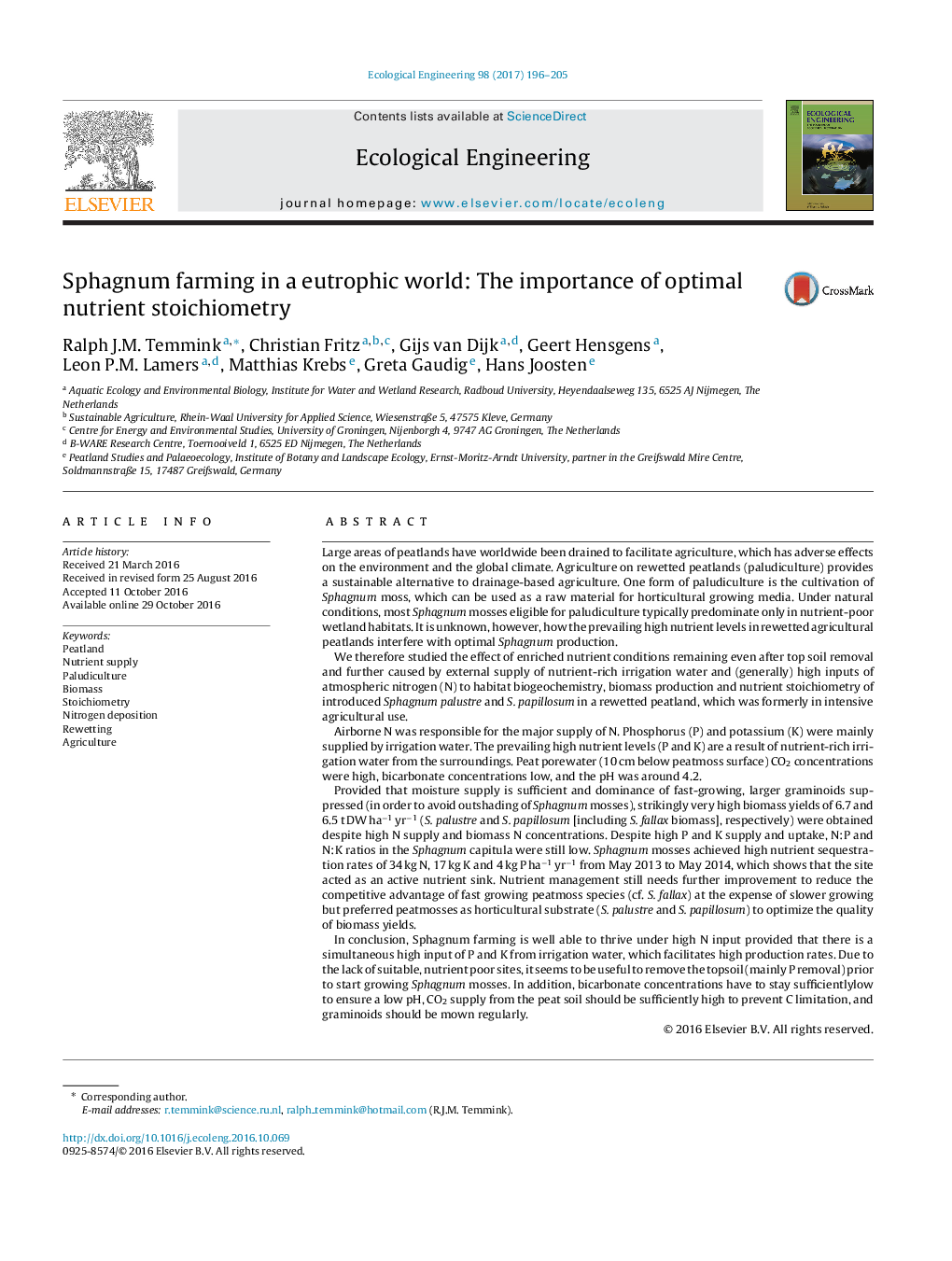| کد مقاله | کد نشریه | سال انتشار | مقاله انگلیسی | نسخه تمام متن |
|---|---|---|---|---|
| 5744070 | 1618001 | 2017 | 10 صفحه PDF | دانلود رایگان |
Large areas of peatlands have worldwide been drained to facilitate agriculture, which has adverse effects on the environment and the global climate. Agriculture on rewetted peatlands (paludiculture) provides a sustainable alternative to drainage-based agriculture. One form of paludiculture is the cultivation of Sphagnum moss, which can be used as a raw material for horticultural growing media. Under natural conditions, most Sphagnum mosses eligible for paludiculture typically predominate only in nutrient-poor wetland habitats. It is unknown, however, how the prevailing high nutrient levels in rewetted agricultural peatlands interfere with optimal Sphagnum production.We therefore studied the effect of enriched nutrient conditions remaining even after top soil removal and further caused by external supply of nutrient-rich irrigation water and (generally) high inputs of atmospheric nitrogen (N) to habitat biogeochemistry, biomass production and nutrient stoichiometry of introduced Sphagnum palustre and S. papillosum in a rewetted peatland, which was formerly in intensive agricultural use.Airborne N was responsible for the major supply of N. Phosphorus (P) and potassium (K) were mainly supplied by irrigation water. The prevailing high nutrient levels (P and K) are a result of nutrient-rich irrigation water from the surroundings. Peat porewater (10 cm below peatmoss surface) CO2 concentrations were high, bicarbonate concentrations low, and the pH was around 4.2.Provided that moisture supply is sufficient and dominance of fast-growing, larger graminoids suppressed (in order to avoid outshading of Sphagnum mosses), strikingly very high biomass yields of 6.7 and 6.5 t DW haâ1 yrâ1 (S. palustre and S. papillosum [including S. fallax biomass], respectively) were obtained despite high N supply and biomass N concentrations. Despite high P and K supply and uptake, N:P and N:K ratios in the Sphagnum capitula were still low. Sphagnum mosses achieved high nutrient sequestration rates of 34 kg N, 17 kg K and 4 kg P haâ1 yrâ1 from May 2013 to May 2014, which shows that the site acted as an active nutrient sink. Nutrient management still needs further improvement to reduce the competitive advantage of fast growing peatmoss species (cf. S. fallax) at the expense of slower growing but preferred peatmosses as horticultural substrate (S. palustre and S. papillosum) to optimize the quality of biomass yields.In conclusion, Sphagnum farming is well able to thrive under high N input provided that there is a simultaneous high input of P and K from irrigation water, which facilitates high production rates. Due to the lack of suitable, nutrient poor sites, it seems to be useful to remove the topsoil (mainly P removal) prior to start growing Sphagnum mosses. In addition, bicarbonate concentrations have to stay sufficiently low to ensure a low pH, CO2 supply from the peat soil should be sufficiently high to prevent C limitation, and graminoids should be mown regularly.
Journal: Ecological Engineering - Volume 98, January 2017, Pages 196-205
